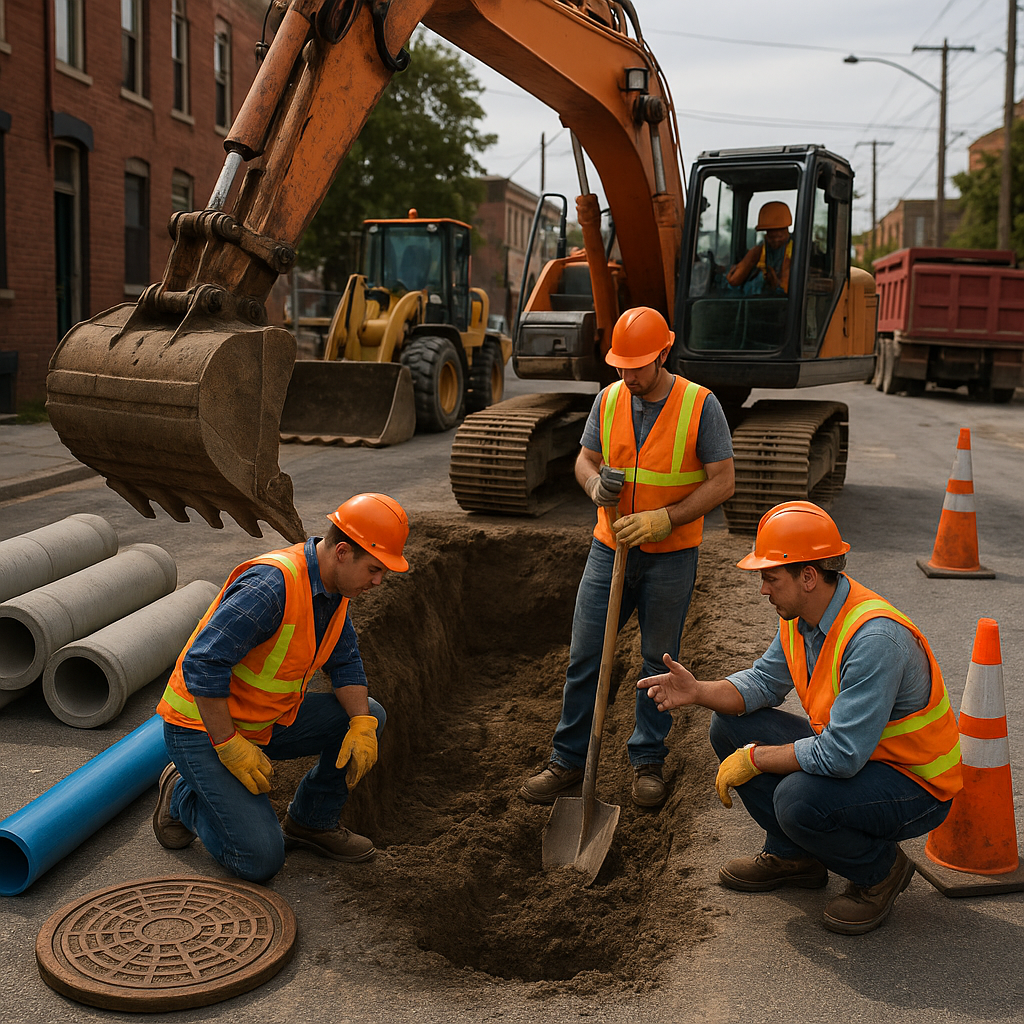Revolutionizing Sewer Inspection with AI & Robotics
Discover how AI and robotics transform sewer inspections. Enhance accuracy, safety, and compliance with advanced technologies.

Revolutionizing Sewer Inspection with AI & Robotics
Introduction
The sewer inspection industry in 2024 is undergoing a transformative phase. With the integration of cutting-edge technologies like robotics, artificial intelligence (AI), and digital data management, businesses are achieving unprecedented levels of efficiency, accuracy, and environmental compliance. This article delves into these technological advancements and their impact on the industry.
The Role of Robotics and Autonomous Systems
Robotics has become a cornerstone of modern sewer inspection practices. Crawler robots equipped with high-definition, pan-and-tilt cameras are now standard tools, offering detailed visual inspections of pipes, even in the most inaccessible areas.
Benefits of Robotics
- Enhanced Coverage: Advanced robots with 3D mapping capabilities can independently navigate complex sewer networks, ensuring comprehensive coverage.
- Improved Data Quality: High-resolution imaging and precise navigation provide superior data for analysis.
- Reduced Human Labor: Automation reduces the need for manual inspection, lowering labor costs and increasing safety.
Artificial Intelligence in Sewer Inspection
AI-powered software is revolutionizing how we analyze video feeds from inspections. These systems automatically detect defects such as cracks, joint displacements, and root intrusions.
AI-Driven Insights
- Real-Time Analysis: AI software processes video feeds in real-time, identifying issues instantly.
- Predictive Maintenance: AI models predict pipe deterioration, allowing for proactive maintenance and reducing emergency repairs.
- Cost Efficiency: By doubling inspection productivity, AI reduces unnecessary repairs and optimizes resource allocation.
Digital Integration and Data Analytics
The integration of digital tools such as cloud-based storage and Geographic Information System (GIS) mapping is reshaping how sewer infrastructure is managed.
Digital Tools for Efficiency
- Cloud-Based Storage: Offers secure, accessible storage for large volumes of inspection data.
- GIS Mapping: Provides a comprehensive view of sewer systems, aiding in strategic planning and maintenance.
- Digital Twins: Virtual models simulate sewer conditions, optimizing inspection and repair strategies.
Safety and Environmental Compliance
Worker safety and environmental compliance are paramount in the sewer inspection industry. The adoption of remote inspection tools significantly reduces risks.
Safety Enhancements
- Remote Inspections: Cameras, drones, and robots minimize the need for workers to enter hazardous areas.
- Real-Time Risk Assessment: Portable gas detectors and video feeds identify potential dangers before workers enter sewers.
- Regulatory Compliance: Automated reporting ensures adherence to EPA and local regulations, preventing environmental harm.
Market Trends and Business Opportunities
The market for sewer inspection technology is expanding rapidly, driven by aging infrastructure and increased government investment.
Emerging Opportunities
- Growing Demand: The need for innovative solutions is increasing as governments and private entities prioritize infrastructure upgrades.
- Cloud-Based Solutions: The shift towards AI-enhanced, cloud-based systems opens new avenues for service providers.
- Predictive Maintenance Services: Offering predictive maintenance as a service can differentiate businesses and attract new clients.
Cost and Pricing Strategies
While the initial investment in AI and robotics may be high, the long-term savings and efficiency gains are significant.
Economic Benefits
- Reduced Operational Costs: Automation reduces labor requirements and inspection times.
- Optimized Repair Schedules: Predictive analytics prevent costly failures by scheduling timely maintenance.
- Resource Allocation: Enhanced data analytics streamline resource management, offering significant cost savings.
Case Studies and Success Stories
Municipalities implementing AI-assisted inspections have seen remarkable improvements in productivity and cost savings.
Success Highlights
- Increased Productivity: AI-driven inspections have doubled productivity in several case studies.
- Cost Savings: Millions saved by avoiding unnecessary repairs through predictive maintenance.
- Infrastructure Management: Improved public health protection due to timely interventions and maintenance.
Conclusion
As the sewer inspection industry embraces advanced robotics, AI, digital twins, and enhanced safety protocols, stakeholders can expect smarter, safer, and more cost-effective management of sewer systems. The potential for growth and improved service quality is vast, making it an exciting time for the industry.
Practical Tips
- Invest in Training: Ensure your team is trained on the latest technologies to maximize their potential.
- Leverage Data Analytics: Use data-driven insights to prioritize maintenance and optimize operations.
- Stay Compliant: Keep up with evolving regulations to maintain compliance and avoid penalties.